- Concord Campus - (925) 687-9555
- Fresno Campus - (559) 222-1903
- Modesto Campus - (209) 521-1821
- Sacramento Campus - (916) 588-2060
- San Jose Campus - (408) 384-7050
- Van Nuys Campus - (747) 200-4567
- Concord Campus - (925) 687-9555
- Fresno Campus - (559) 222-1903
- Modesto Campus - (209) 521-1821
- Sacramento Campus - (916) 588-2060
- San Jose Campus - (408) 384-7050
- Van Nuys Campus - (747) 200-4567
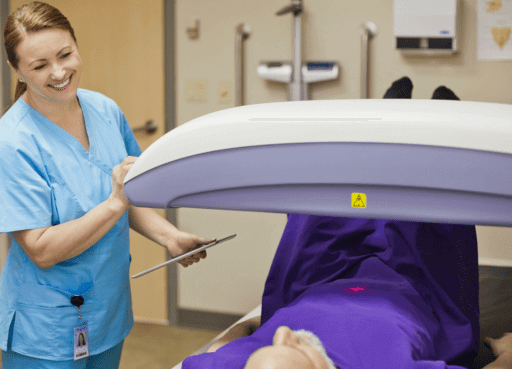
- Sacramento, CA
5 Weeks Program
No Experience Necessary
Job Placement Assistance
| Student Tuition Recovery Fund (Non-Refundable) | $0.00 |
| Registration Fee (Non-Refundable) | $100.00 |
| Books (Non-Refundable, if accessed) | $0.00 |
| Tuition Fee | $3,416.00 |
|
TOTAL PROGRAM COST* *Program Fees are subject to change |
$3,516.00 |
About the DXA Program
Program Mission
Gurnick Academy of Medical Arts aims to offer quality allied health and nursing programs that integrate professional skills, career-focused education, and hands-on practical experience by empowering students to develop and achieve their personal and career goals.
Program Description
The Bone Densitometry Technician (DXA) program prepares competent imaging professionals committed to professionalism, ethical behavior, technical knowledge, radiation protection, and patient care. Students who complete this program may pursue an entry-level position as a Bone Densitometry Technician at physicians’ offices, imaging centers, and research and governmental offices.
Graduates who complete the program must pass the California State Examination to secure a position as a Bone Densitometry Technician. Duties include assessing and caring for patients, operating machines, scanning protocols, analyzing anatomy, and generating reports.
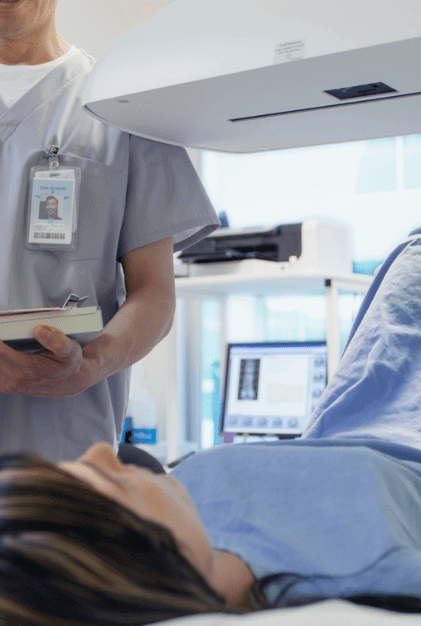

DXA Program Goals and Objectives
Graduate students with the clinical competence required to be entry-level technologists.
Produce students who will demonstrate effective interpersonal skills with the entire healthcare team and the public.
Enable students to employ appropriate critical thinking and problem-solving skills to be entry-level technologists in the clinical setting.
DXA Program Student Learning Outcomes
- Demonstrate the positioning skills of an entry-level technologist.
- Evaluate images for diagnostic quality.
- Employ effective communication skills with the healthcare team.
- Utilize communication skills with the patients and the public.
- Able to adapt to patients’ conditions that deviate from routine exams.
- Follow proper safety and ALARA practices for routine and non-routine exams.
DXA Program Information, Length, and Schedule
(5 Approved instruction Weeks)
The program information, length, and schedule may change. Please read the accompanying Addendum for changes and updates. Check with an admission advisor for details.
The Bone Densitometry Technician (DXA) program provides a library and classrooms with teaching aids, textbooks, journals, periodicals, and anatomical charts. The DXA Program is a certificate program. Students will receive didactic and clinical rotations in affiliated medical facilities. The Instructor-to-Student ratio is 1:25 during online lectures and 1:1 during clinical externships.
Classes may be scheduled Monday through Sunday. Students will attend a maximum of 40 hours per week of instruction, including didactic lectures, laboratory, and clinicals. A mandatory two-hour laboratory on campus is required before beginning clinical rotations. Clinical activities may be held during weekdays or weekends, and shifts may include day or evening as the clinical site requires. Didactic courses are held online between 8:00 AM to 10:30 PM.
The program’s affiliated clinical sites hold current state-issued certificates as approved clinical sites. The clinical sites provide supervised clinical instruction in the patient care setting. All clinical sites employ X-ray technicians or radiologic technologists and supervisors/operators (doctors) who hold certification from the State of California Radiologic Health Branch.
The DXA program consists of 4.0 quarter credit hours, completed over five (5) weeks for fifty-six contact hours. Day/evening classes are currently scheduled for the program. Please refer to the course schedule for details. Students must complete all didactic and clinical hours before graduating.
Requirements
- Admission Requirements
- Performance Requirements
- Graduation Requirements
Please review the following requirements: General Admission Requirements for all programs.
Applicants must:
- Submit an essay (no longer than two pages, typed, double-spaced) that describes the following:
- Reasons for the applicant’s desire to become a Bone Densitometry Technician.
- The applicant’s attributes will support the profession and the student’s ability to complete the DXA program.
- Describe the support system, such as a person, time management, and resources to support the applicant’s efforts and success in the program.
- For some campuses, the applicant pool may be larger than the number of available seats at the desired campus. In this case, the campus may require an additional step, such as an interview with the program director, assistant program director, or designees.
- Submit an essay (no longer than two pages, typed, double-spaced) that describes the following:
Please review the following requirements: General Performance Requirements for all programs.
Each program has physical and non-physical requirements to ensure the safety and welfare of our students and patients. Almost all of our students (check with an Admission Advisor if applicable) must be able to:
- Handle stressful situations related to technical and procedural standards and patient care situations.
- Respond quickly and appropriately to emergencies using the English language.
- Communicate effectively with patients and staff in clear English in verbal and written forms.
- Read and interpret (or learn how to) patient charts.
- Tolerate strong, unpleasant odors.
- Provide physical and emotional support to the patients during procedures.
- Report clearly and legibly through progress notes in patient charts.
- Meet class standards for successful course completion.
- Collect, interpret, and integrate data about patients.
- Recognize and respond appropriately to individuals of all ages, genders, and races and from all socioeconomic, religious, and cultural backgrounds.
- Cope with heavy workloads, demanding patients, and life-threatening clinical solutions.
- Recognize and respond appropriately to potentially hazardous situations.
- Demonstrate the physical and emotional capacity to work a 40-hour week at the clinical rotation(s).
- Behave ethically, soundly, competently, compassionately, and professionally in the classroom and the clinic.
- One (1) pound (0.45 kilograms) – five (5) pounds (2.27 kilograms) frequently—image receptors, lead aprons.
- 20 pounds (9.07 kilograms) – 50 pounds (22.68 kilograms) occasionally—patient transfers and positioning.
- 50 pounds (22.68 kilograms) – 70 pounds (31.75 kilograms) rarely to occasionally—patient transfers.
- Stand and walk for up to eight (8) hours per day.
- Carry a minimum of 20 pounds while walking a distance of 100 feet.
- Bend or flex the upper trunk forward to 45 degrees and the lower torso into a squatting position.
- Rotate the upper trunk to 30 degrees to the right and left.
- Reach at least 72 inches above floor level or a full arm’s reach.
- Utilize the sense of hearing to communicate with the patients and healthcare team effectively.
- Utilize the sense of vision in all levels of hospital lighting, which varies from low illumination levels to bright light levels.
- Sit in class for up to eight (8) hours per day.
- Palpate anatomical structures and handle injured body parts without causing injury to the patient.
- Give manual resistance to a patient’s arm, leg, or trunk during exercise.
- Move with adequate agility and speed to ensure patient safety.
- Walk and balance well enough to help patients walk and transfer with or without equipment while preventing injury to patients and themselves.
- Safely grasp and manipulate small objects and set dials on electrical equipment.
- Use visual, auditory, and tactile senses to observe patients and collect and interpret data.
- Respond to warning sounds, machine alarms, and calls for help.
Students must have sufficient strength, motor coordination, and manual dexterity to:
- Transport, move, lift, and transfer patients from a wheelchair or cart to an X-ray table or a patient bed.
- Move, adjust, and manipulate various radiographic equipment, including equipment for physical transportation.
- Complete examinations on the patient according to established policies and procedures with speed and accuracy.
Students must also be capable of the following:
- Handling stressful situations related to technical and procedural standards and patient care situations.
- Providing physical and emotional support to the patient during the radiographic procedures.
- Ability to respond to situations requiring first aid and provide emergency care to the patient without or until the physician arrives.
- Communicating verbally in an effective manner to direct patients during radiographic examinations.
- Visually recognizing anatomy on the computer monitor.
- Reading and interpreting patient charts and requisitions for radiographic examinations.
- Respond to warning sounds, machine alarms, and calls for help.
Students must have the mental and intellectual capacity to:
- Calculate and select proper technical factors according to the individual needs of the patient and the requirements of the procedure’s standards of speed and accuracy.
- Review and evaluate the recorded images on a computer monitor and archiving system to identify patient pathology, if present, accurate positioning, technical factors for completion of a diagnostic examination, and other appropriate and pertinent technical qualities.
- Cope with heavy workloads, demanding patients, and life-threatening clinical situations.
- Behave ethically, soundly, competently, compassionately, and professionally in the classroom and clinic.
The following requirements must be met for a student to graduate from the Bone Densitometry Technician (DXA) program at Gurnick Academy of Medical Arts:
- The successful completion of all program courses and hours.
- All financial obligations have been met, including tuition and textbook charges.
*Gurnick Academy of Medical Arts has not determined if any programs fulfill the educational requirements for specific professional licensure or certification required for employment outside California unless identified by the program below. It is recommended that students located in or planning to relocate to a state apart from where the program’s physical campus is located research any certification or employment requirements for their intended state.
Please review the following requirements: General Admission Requirements for all programs.
Applicants must:
- Submit an essay (no longer than two pages, typed, double-spaced) that describes the following:
- Reasons for the applicant’s desire to become a Bone Densitometry Technician.
- The applicant’s attributes will support the profession and the student’s ability to complete the DXA program.
- Describe the support system, such as a person, time management, and resources to support the applicant’s efforts and success in the program.
- For some campuses, the applicant pool may be larger than the number of available seats at the desired campus. In this case, the campus may require an additional step, such as an interview with the program director, assistant program director, or designees.
Please review the following requirements: General Performance Requirements for all programs.
Each program has physical and non-physical requirements to ensure the safety and welfare of our students and patients. Almost all of our students (check with an Admission Advisor if applicable) must be able to:
- Handle stressful situations related to technical and procedural standards and patient care situations.
- Respond quickly and appropriately to emergencies using the English language.
- Communicate effectively with patients and staff in clear English in verbal and written forms.
- Read and interpret (or learn how to) patient charts.
- Tolerate strong, unpleasant odors.
- Provide physical and emotional support to the patients during procedures.
- Report clearly and legibly through progress notes in patient charts.
- Meet class standards for successful course completion.
- Collect, interpret, and integrate data about patients.
- Recognize and respond appropriately to individuals of all ages, genders, and races and from all socioeconomic, religious, and cultural backgrounds.
- Cope with heavy workloads, demanding patients, and life-threatening clinical solutions.
- Recognize and respond appropriately to potentially hazardous situations.
- Demonstrate the physical and emotional capacity to work a 40-hour week at the clinical rotation(s).
- Behave ethically, soundly, competently, compassionately, and professionally in the classroom and the clinic.
- One (1) pound (0.45 kilograms) – five (5) pounds (2.27 kilograms) frequently—image receptors, lead aprons.
- 20 pounds (9.07 kilograms) – 50 pounds (22.68 kilograms) occasionally—patient transfers and positioning.
- 50 pounds (22.68 kilograms) – 70 pounds (31.75 kilograms) rarely to occasionally—patient transfers.
- Stand and walk for up to eight (8) hours per day.
- Carry a minimum of 20 pounds while walking a distance of 100 feet.
- Bend or flex the upper trunk forward to 45 degrees and the lower torso into a squatting position.
- Rotate the upper trunk to 30 degrees to the right and left.
- Reach at least 72 inches above floor level or a full arm’s reach.
- Utilize the sense of hearing to communicate with the patients and healthcare team effectively.
- Utilize the sense of vision in all levels of hospital lighting, which varies from low illumination levels to bright light levels.
- Sit in class for up to eight (8) hours per day.
- Palpate anatomical structures and handle injured body parts without causing injury to the patient.
- Give manual resistance to a patient’s arm, leg, or trunk during exercise.
- Move with adequate agility and speed to ensure patient safety.
- Walk and balance well enough to help patients walk and transfer with or without equipment while preventing injury to patients and themselves.
- Safely grasp and manipulate small objects and set dials on electrical equipment.
- Use visual, auditory, and tactile senses to observe patients and collect and interpret data.
- Respond to warning sounds, machine alarms, and calls for help.
Students must have sufficient strength, motor coordination, and manual dexterity to:
- Transport, move, lift, and transfer patients from a wheelchair or cart to an X-ray table or a patient bed.
- Move, adjust, and manipulate various radiographic equipment, including equipment for physical transportation.
- Complete examinations on the patient according to established policies and procedures with speed and accuracy.
Students must also be capable of the following:
- Handling stressful situations related to technical and procedural standards and patient care situations.
- Providing physical and emotional support to the patient during the radiographic procedures.
- Ability to respond to situations requiring first aid and provide emergency care to the patient without or until the physician arrives.
- Communicating verbally in an effective manner to direct patients during radiographic examinations.
- Visually recognizing anatomy on the computer monitor.
- Reading and interpreting patient charts and requisitions for radiographic examinations.
- Respond to warning sounds, machine alarms, and calls for help.
Students must have the mental and intellectual capacity to:
- Calculate and select proper technical factors according to the individual needs of the patient and the requirements of the procedure’s standards of speed and accuracy.
- Review and evaluate the recorded images on a computer monitor and archiving system to identify patient pathology, if present, accurate positioning, technical factors for completion of a diagnostic examination, and other appropriate and pertinent technical qualities.
- Cope with heavy workloads, demanding patients, and life-threatening clinical situations.
- Behave ethically, soundly, competently, compassionately, and professionally in the classroom and clinic.
The following requirements must be met for a student to graduate from the Bone Densitometry Technician (DXA) program at Gurnick Academy of Medical Arts:
- The successful completion of all program courses and hours.
- All financial obligations have been met, including tuition and textbook charges.
*Gurnick Academy of Medical Arts has not determined if any programs fulfill the educational requirements for specific professional licensure or certification required for employment outside California unless identified by the program below. It is recommended that students located in or planning to relocate to a state apart from where the program’s physical campus is located research any certification or employment requirements for their intended state.
DXA Admissions Point System
Bone Densitometry Technician (DXA) Admission Point System
Applicants are deemed qualified on a point system. The highest-ranked (above a minimum) will be offered seats in the program. The following point system evaluates each applicant, showing the maximum achievable score.
| Bone Densitometry Technician (DXA) Points Category | Possible Points |
|---|---|
| I. Admissions Exam - CCAT | |
| 32 or Greater | 25 |
| 27-31 | 20 |
| 24-26 | 15 |
| 18-23 | 10 |
| 12-17 | 5 |
| 0-11 | 0 |
| II. Post-Secondary Education | |
| Gurnick Academy of Medical Arts Graduate or Currently Enrolled | 10 |
| Associate Degree/Military Service | 15 |
| Baccalaureate Degree | 20 |
| III. Academic Achievement: College Level Courses & High School Courses Courses | |
| A. Overall High School GPA | |
| GPA 3.0 | 5 |
| GPA 3.5 | 10 |
| GPA 3.9 | 15 |
| B. Overall College GPA | |
| GPA 3.0 | 20 |
| GPA 3.5 | 30 |
| GPA 3.9 | 35 |
| IV. One-Page Resume (required) | 25 |
| V. Essay - One-Page, APA Format | 25 |
| Essay will include: | |
| Statement of why you want to join this modality | |
| The essential functions and role of a Technician in this field | |
| Preparation to become successful in this program | |
| Sources used to prepare for the essay | |
| VI. Healthcare Background | |
| 1-3 Years | 10 |
| More than 3 Years | 20 |
| VII. Evaluation from the Office of Admissions | 35 |
| Possible Total Points | 200 |
Career Services

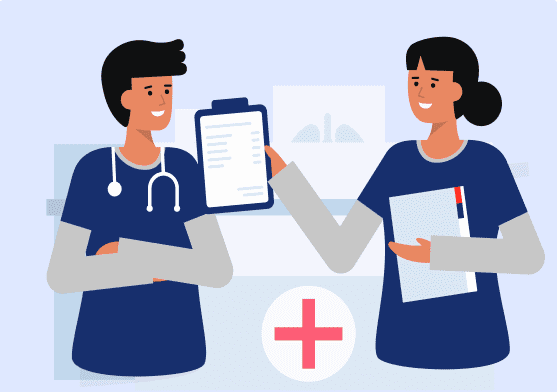




DXA Program Outline
| Course Number | Title | Clock Hours | Quarter Credit Hours |
|---|---|---|---|
| DXA 101 | Fundamentals of Bone Densitometry | 40.0 | 3.5 |
| DXA 101C | Clinical Practice I | 16.0 | 0.5 |
| Total | 56.0 | 4.0 |
Read the Bone Densitometry Technician (DXA) Program Course Descriptions.
DXA Clinical Training
Gurnick Academy of Medical Arts considers clinical experience essential in healthcare education.
Students must rotate throughout our affiliated medical facilities while attending our Bone Densitometry Technician (DXA) program.
Job Outlook and Salary
View the O*Net Online 31-9099.00 Healthcare Support Workers job profile for general information about the profession. Find information about the salary data in California and the major cities near the program’s campuses.

Accreditation and Approval
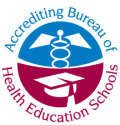
Gurnick Academy of Medical Arts holds national institutional accreditation by the Accrediting Bureau of Health Education Schools (ABHES). ABHES accreditation does not include continuing education courses.
ABHES Mailing Address:
6116 Executive Blvd., Suite 730
North Bethesda, MD 20852
ABHES Phone: 301-291-7550
ABHES Email: Info
ABHES Website: abhes.org
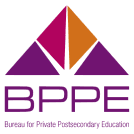
Gurnick Academy of Medical Arts is a private institution approved to operate by the California Bureau for Private Postsecondary Education. Approval to operate means the institution is compliant with the minimum standards in the California Private Postsecondary Education Act (CPPEA) of 2009 (as amended) and Division 7.5 of Title 5 of the California Code of Regulations. CPPEA governs the Bureau for Private Postsecondary Education.
The Office of Student Assistance and Relief is available to support prospective students, current students, or past students of private postsecondary educational institutions in making informed decisions, understanding their rights, and navigating available services and relief options. The office may be reached by calling (888) 370- 7589, option #5, or by visiting osar.bppe.ca.gov.
BPPE Mailing Address:
1747 N. Market Blvd., Suite 225
Sacramento, CA 95834
BPPE Phone: 888-370-7589
BPPE Email: General
BPPE Website: bppe.ca.gov
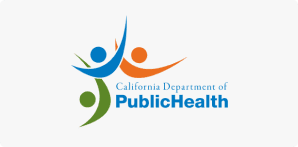
The California Department of Public Health, Radiologic Health Branch (CDPH-RHB) approves Gurnick Academy of Medical Arts for the Bone Densitometry Technician (DXA) Program.
CDPH-RBH Mailing Address:
P.O. Box 997377, MS 0500
Sacramento, CA 95899
CDPH-RBH Phone: 916-558-1784
CDPH-RHB Website: cdph.ca.gov
Financial Aid

Gurnick Academy of Medical Arts aims to help every student obtain Financial Aid* to attend their chosen program. Gurnick Academy of Medical Arts participates in various federal and state student financial assistance programs.
The financial aid programs are designed to assist students with inadequate financial resources to meet their education’s total cost. Each campus has a Financial Aid Advisor who can help students with any financial aid questions.
For more information, please visit our Financial Aid page.
*for those who qualify
Frequently Asked Questions
Please choose from the dropdown to review a category of FAQs
-
You can fill out our online contact form to have information mailed to you or a school representative contact you. Or you can call us at 1-877-GURNICK.
-
Please click on the link for more info about Admission Requirements.
-
Please find more info about the Foreign Transcript/Diploma Evaluation process.
-
Please find more info about the Foreign Transcript/Diploma Evaluation process.
-
To qualify for the DXA program, you must pass the CCAT exam.
-
Learn more about the CCAT exam.
-
Regardless of degree or background, all applicants must pass the entrance exam before admission into the program.
-
You do not need to take any prerequisite courses.
-
Each campus has its own application deadlines. You may contact the admissions department for more details.
-
The program has affiliation agreements with many health care locations where you will complete your clinical experience hours.
-
All externships are unpaid.
-
To view the fee breakdown, please see the Program Fees section.
-
Financial aid is available for those who qualify. Gurnick Academy participates in various federal and state student financial assistance programs.
-
You will receive a certificate.
-
You will need to take state licensing examinations. Please find more info in our Catalog and Addendum.
-
DXA test preparation is strongly emphasized throughout the entire curriculum, and many resources are shared with students to assist.
-
You can visit the CDPH-RHB website for more details.
-
We may assist with job placements for all students who complete the program. However, we cannot guarantee employment.
-
Bone densitometry technicians commonly work in doctors’ offices, clinics, and urgent care facilities. Less common are imaging centers.
Have Questions? We are here to help!
Apply Now Form
External Resources for the Bone Densitometry Technician (DXA) Program
If you are a person who is deaf, hard of hearing, or speech-disabled, please Dial 711 to place a call through California Relay.

